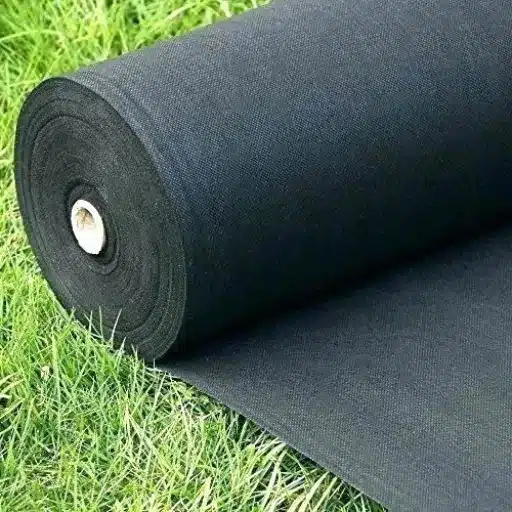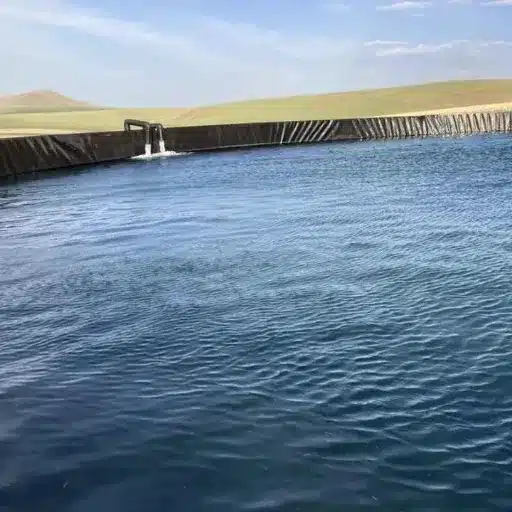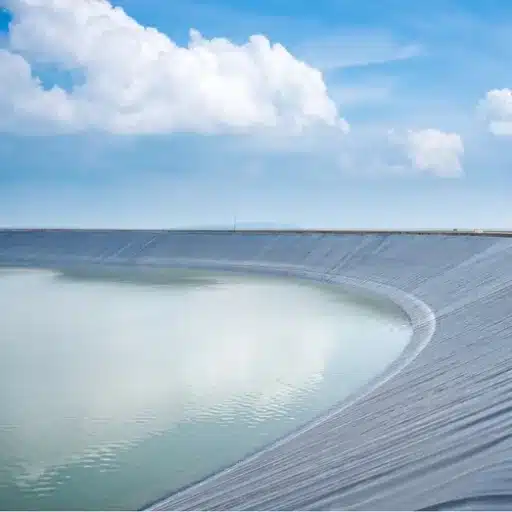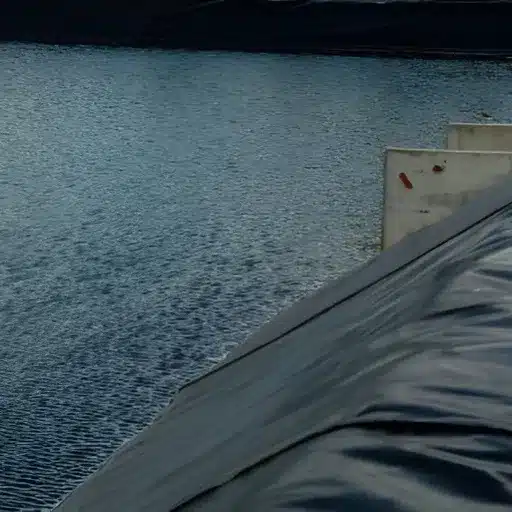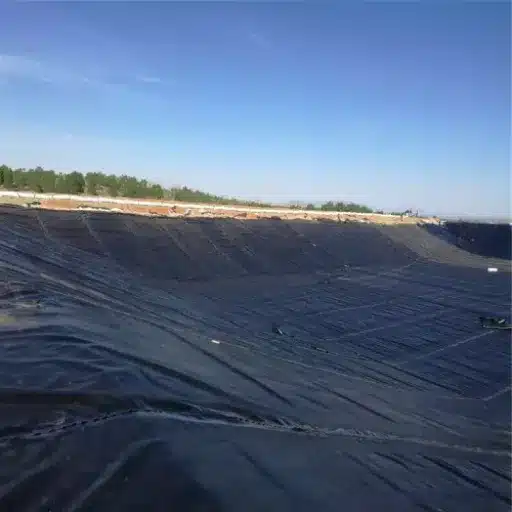When it comes to modern construction, environmental engineering, and infrastructure development, understanding the right materials for the job is crucial. Among the most commonly used yet often confused materials are geotextiles and geomembranes. While both play vital roles in enhancing durability, stability, and functionality across various projects, their specific purposes and properties differ significantly. This blog post dives deep into the distinctions between geotextile and geomembrane materials, helping you grasp their unique characteristics, applications, and advantages. Whether you’re an industry professional or simply curious about innovative construction solutions, this guide will equip you with valuable insights to make informed decisions for your next project.
What are Geomembranes and Geotextiles?

Geomembranes are impermeable synthetic materials designed to block fluid or gas movement, commonly used in applications like landfill liners, wastewater containment, and environmental protection. They are typically made from polymers such as high-density polyethylene (HDPE).
On the other hand, geotextiles are permeable fabrics that serve purposes like filtration, separation, reinforcement, and drainage in construction and civil engineering. They are usually made from materials like polypropylene or polyester and can be woven or non-woven depending on the application requirements.
Defining Geomembranes
Geomembranes are highly engineered materials designed to provide impermeable barriers in a wide range of industrial, environmental, and civil engineering applications. These geosynthetic products are predominantly manufactured using polymer resin materials such as high-density polyethylene (HDPE), linear low-density polyethylene (LLDPE), polyvinyl chloride (PVC), and ethylene propylene diene terpolymer (EPDM). The versatility offered by these materials allows geomembranes to cater to diverse industry needs ranging from large-scale landfill liners to pond liners and liquid containment systems.
One of the standout features of geomembranes is their exceptional resistance to chemicals, UV radiation, and extreme temperatures, which makes them ideal for applications in aggressive environments. For example, HDPE geomembranes boast a chemical resistance exceeding 90% compatibility with commonly found environmental contaminants, enhancing their long-term reliability. These materials typically have tensile strengths between 22 to 30 MPa and an average elongation rate at break ranging from 700% to 800%, ensuring durability under mechanical stress.
Additionally, advancements in manufacturing technologies have optimized geomembrane performance by offering textured surfaces for enhanced frictional properties, critical in preventing slippage in sloping structures like landfills. Modern geomembranes also incorporate multilayer constructions and co-extruded barriers, which improve their gas and vapor impermeability while maintaining flexibility and ease of installation.
The use of geomembranes plays a pivotal role in environmental sustainability. By preventing leachate migration in waste management facilities or safeguarding groundwater resources from hazardous spills, geomembranes function as a critical component in environmental protection systems. Their adaptability and robust performance underscore their importance in meeting modern engineering and environmental challenges.
Understanding Geotextile Properties
Geotextiles are versatile materials widely used in civil engineering, environmental, and geotechnical applications due to their unique properties and multifunctional capabilities. These synthetic fabrics are typically made from polymers such as polypropylene or polyester, offering an exceptional balance between strength, durability, and flexibility.
One of the key characteristics of geotextiles is their permeability, enabling them to filter and drain fluids effectively while preventing the passage of fine soil particles. For example, in road construction, non-woven geotextiles are crucial for separating soil layers, reducing subgrade contamination, and prolonging service life. Tensile strength is another important property, with geotextiles designed to withstand substantial stress loads, enhancing the stability of structures like retaining walls or steep slopes.
Additionally, geotextiles exhibit resistance to chemical degradation, UV exposure, and biological attacks, ensuring extended durability in various conditions. Laboratory testing in tensile strength measurements has shown that geotextiles can achieve values ranging from 100 to over 400 kN/m, depending on the material and application. Their range of functions includes separation, filtration, drainage, reinforcement, and even erosion control, making them indispensable for modern infrastructure projects.
Furthermore, with advancements in material technology, manufacturers now produce specialized geotextiles tailored for specific uses, such as high-temperature-resistant varieties for extreme environments or biodegradable options for eco-friendly applications. These innovations, coupled with their proven effectiveness in various industries, reinforce the essential role of geotextiles in solving today’s engineering and environmental challenges.
Key Functions of Geotextiles and Geomembranes
1. Separation
Geotextiles act as a barrier between different soil layers to prevent mixing, which can compromise structural integrity. This is especially critical in road and railway construction, where the separation of subgrade and base layers ensures stability and extends the lifespan of the infrastructure. Studies indicate that properly implemented geotextiles can enhance construction durability by up to 40%, reducing the need for frequent repairs.
2. Filtration
Geotextiles allow water to pass through while retaining soil particles, ensuring the stability of surrounding structures. These filtration properties are invaluable in applications such as retaining walls or beneath riprap in coastal systems. They help maintain drainage efficiency while preventing soil erosion, with documented reductions in sediment loss by as much as 80% when properly deployed.
3. Drainage
Geotextiles and geomembranes serve an essential role in facilitating controlled water movement. By channeling water through specific pathways, they prevent waterlogging and associated structural damage. For instance, in landfill capping systems, geomembranes combined with drainage geotextiles prevent leachate build-up, protecting both the environment and public health.
4. Protection
Geomembranes are often used as liners in landfills, reservoirs, and containment systems to prevent seepage of hazardous materials. Geotextiles complement these by providing a cushioning layer, guarding the geomembranes against punctures and tears. Studies demonstrate that the use of protective geotextiles can extend the functional life of geomembranes by several decades under optimal conditions.
5. Reinforcement
Geotextiles improve the load-bearing capacity of weak soils by distributing loads more evenly, reducing deformation and settlement risks in infrastructure projects. For example, reinforced retaining walls constructed with geotextiles exhibit up to double the stress resistance compared to non-reinforced counterparts, making them indispensable in areas with unstable ground conditions.
Geotextiles and geomembranes showcase their versatility and efficiency across a wide range of civil engineering applications, backed by a wealth of data and practical success in projects worldwide. Their contribution to sustainable construction and environmental management underscores their role as vital components in modern infrastructure systems.
How Do Geomembrane and Geotextile Work in Geosynthetics?
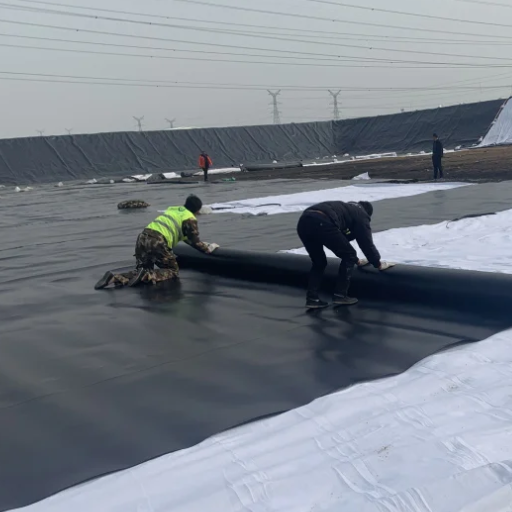
Geomembranes and geotextiles serve distinct yet complementary roles within geosynthetics. Geomembranes primarily function as barriers, preventing the movement of liquids or gases through a structure. They are commonly used in applications such as lining landfills, reservoirs, and canals to ensure containment and protection. Geotextiles, on the other hand, are used for filtration, separation, reinforcement, and drainage. They help stabilize soil, improve load distribution, and allow water to pass while preventing the movement of fine particles. Together, these materials enhance the durability, functionality, and sustainability of geotechnical and environmental projects.
Role of Geomembrane Liner in Waterproofing
Geomembrane liners play a critical role in waterproofing by providing an impermeable barrier that prevents the seepage of liquids into surrounding soil or groundwater. These liners are most commonly made from materials such as high-density polyethylene (HDPE), polyvinyl chloride (PVC), and ethylene propylene diene monomer (EPDM), all of which are selected for their durability, flexibility, and resistance to chemicals and UV degradation.
One of their key applications is in landfill lining systems, where geomembrane liners prevent leachate—a liquid that arises from decomposing waste—from contaminating the environment. Studies indicate that modern landfill designs using geomembrane liners can reduce leachate leakage by over 99%. Additionally, in water reservoir construction, these liners effectively mitigate water loss due to infiltration, ensuring efficient long-term water storage. For instance, HDPE liners, known for their high tensile strength, are often used in reservoirs to provide robust containment.
Geomembrane liners are also utilized in mining operations and industrial processes to manage waste and tailings, safeguarding nearby ecosystems from hazardous materials. These liners are engineered to withstand extreme operating conditions, offering chemical resistance to acidic or alkaline liquids typically found in mining sites. Furthermore, advancements in manufacturing processes have improved their thickness control and seam integrity, enhancing their overall lifespan and performance.
By integrating geomembrane liners into infrastructure and environmental projects, industries achieve higher efficiency, safety, and sustainability. Reports have shown that, when properly installed and maintained, geomembrane liners can function effectively for decades, proving their value as a reliable waterproofing solution across various applications.
Utilization of Geotextile in Soil Reinforcement
Geotextiles play a critical role in modern soil reinforcement techniques, offering durability, cost-efficiency, and environmental benefits for a range of engineering projects. Designed primarily for separation, filtration, drainage, and reinforcement, geotextiles help enhance the mechanical properties of soil, making it more stable and capable of bearing loads in various construction scenarios.
One of their most notable applications is in the reinforcement of retaining walls, embankments, and slopes. Geotextiles distribute load pressure evenly, reduce settlement, and increase shear strength, ensuring long-term stability. For instance, reinforced soil retaining walls incorporating geotextiles have been reported to withstand pressures of more than 200 kPa, demonstrating significant support for large infrastructure needs.
Additionally, geotextiles are valued for reducing soil erosion in challenging environments. By minimizing displacement and improving soil cohesion, they protect vulnerable landscapes from damage caused by water runoff, floods, or heavy rainfall. The permeability of geotextiles allows water to pass through while retaining soil particles, a feature particularly advantageous in drainage systems and road construction.
Recent advancements in geotextile materials, such as high-strength polyester and polypropylene, have further optimized their performance and extended their lifespan in demanding applications. Industry data highlights that woven geotextiles often exceed tensile strength requirements by 50%, making them especially effective in heavy-duty engineering uses such as reinforcing bridge foundations or subsurface stabilization in highways.
By integrating geotextiles into soil reinforcement projects, engineers can achieve more resilient and sustainable outcomes, with reduced maintenance costs and extended structural life spans. These innovative materials are integral to addressing modern construction challenges while supporting environmentally friendly practices in civil and geotechnical engineering.
The Importance of Geosynthetic Material in Construction
Geosynthetic materials have revolutionized the construction industry by offering versatile and effective solutions to critical challenges such as soil instability, erosion control, and drainage improvement. These materials—encompassing geotextiles, geomembranes, geogrids, and geocomposites—play a pivotal role in reinforcing infrastructural projects while promoting cost-efficiency and sustainability.
One of the primary applications of geosynthetics is in road construction. Research indicates that using geotextiles can extend road lifespans by reducing rutting and minimizing base-course thickness by up to 30%, leading to significant cost savings in materials and labor. Similarly, geomembranes are widely used in water containment systems due to their impermeability and ability to prevent leakage, particularly in wastewater treatment plants and landfill liners. Their application ensures long-term environmental protection and resource preservation.
Additionally, geogrids are instrumental in stabilizing soft soils, enhancing the load-bearing capacity of foundations, and reducing the risk of settlement. Reports reveal that geogrid reinforcement in retaining walls and steep slopes has witnessed a success rate of over 95% in mitigating deformation and structural failures, even under high stress conditions. This adaptability makes geosynthetics indispensable for infrastructure projects in regions facing challenging soil conditions.
Beyond their structural advantages, geosynthetic materials contribute to sustainability by reducing reliance on non-renewable resources. By replacing conventional materials like aggregates and cement in certain applications, geosynthetics lower greenhouse gas emissions and decrease the environmental footprint of construction projects. Furthermore, advancements in manufacturing processes have produced eco-friendly geosynthetics made from recycled and biodegradable materials, aligning with global efforts to promote circular economies.
From highways and bridges to landfills and erosion control systems, the integration of geosynthetic materials continues to reshape modern construction practices. This innovation enables engineers to design durable, efficient, and environmentally responsible solutions, addressing both present and future demands in civil engineering.
What Are the Types of Geotextiles and Their Applications?
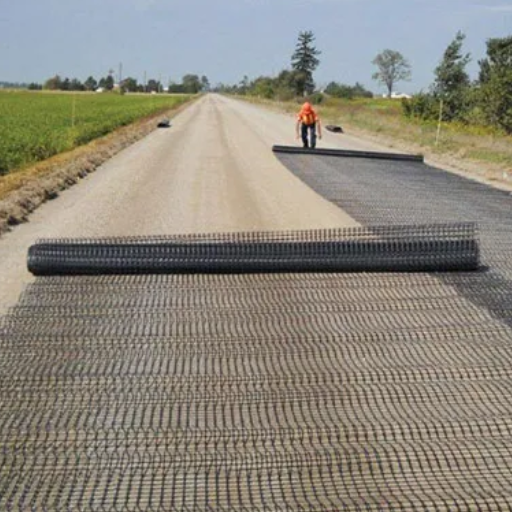
- Woven Geotextiles
Woven geotextiles are made by weaving fibers together to create a strong and durable fabric. These are commonly used in applications requiring high tensile strength, such as road construction, retaining walls, and erosion control.
- Non-Woven Geotextiles
Non-woven geotextiles are manufactured by bonding fibers together, either mechanically or chemically. They are highly effective for filtration, drainage, and separation tasks, often found in projects like landfills, subsurface drainage systems, and soil stabilization.
- Knitted Geotextiles
Knitted geotextiles are created by interlocking loops of yarn, offering flexibility and adaptability. These are typically utilized in specialized construction projects requiring customized reinforcement or drainage solutions.
Each type of geotextile serves a specific purpose, ensuring efficiency and reliability in various civil engineering and environmental applications.
Exploring Woven Geotextile and Its Uses
Woven geotextiles are manufactured by weaving individual yarns together on a loom to create a highly durable and robust material. Their primary strength lies in tensile reinforcement, making them ideal for applications where load distribution and stabilization are essential. These geotextiles are particularly effective in road construction, where they improve structural integrity by separating soil layers and preventing intermixing, thereby extending the lifespan of roadways.
One notable advantage of woven geotextiles is their high load capacity. For instance, heavy-duty woven geotextiles made from polypropylene or polyester can accommodate tensile strengths exceeding 200 kN/m, making them suitable for large-scale infrastructure projects, such as highways, airport runways, and railways. Additionally, their low elongation characteristics ensure minimal deformation under stress, further enhancing stability in challenging conditions.
Beyond their mechanical properties, woven geotextiles also excel in erosion control. They are frequently employed along riverbanks, coastal areas, and slopes to mitigate soil erosion by acting as a barrier against water flow. Recent data highlights their efficiency in preventing sediment loss, with erosion rates reduced by up to 70% when appropriately utilized in water-bound environments.
While woven geotextiles prioritize strength and stability, their permeability tends to be lower than nonwoven alternatives, making them less suitable for applications requiring high water filtration. However, modern innovations have introduced hybrid woven geotextiles that blend reinforcement capabilities with improved drainage properties, expanding their versatility in various construction scenarios.
Woven geotextiles represent a critical component in geotechnical engineering, offering a combination of durability, reinforcement, and adaptability. Their continued development ensures their relevance across an expanding range of construction and environmental applications.
Applications of Nonwoven Geotextiles
Nonwoven geotextiles are widely utilized in numerous industries due to their excellent filtration, separation, and protection functions. One of their primary applications is in drainage systems, where they effectively prevent soil particles from clogging drainage pipes while allowing water to pass through. This property is essential in road construction, where proper drainage is critical to maintaining structural integrity and preventing erosion.
Additionally, nonwoven geotextiles are frequently employed as a protective layer in landfill systems. They help safeguard geomembranes from mechanical damage caused by sharp objects or irregular terrain, ensuring long-term performance and environmental safety. Recent advancements have also seen their use in coastal engineering projects, such as seawall filters, where they enhance stability and resist the erosive impact of tides and waves.
Statistics reveal their growing market demand, particularly in Asia-Pacific and Europe, where infrastructure projects are accelerating. For instance, the global geotextile market size is projected to reach over $12 billion by 2025, with nonwoven types accounting for a significant share due to their versatility and cost-effectiveness. These materials are becoming indispensable as industries increasingly prioritize sustainable and efficient construction methodologies.
Choosing the Right Geotextile Fabric for a Project
When selecting the ideal geotextile fabric for a project, understanding the specific requirements and conditions of the project site is crucial. Factors such as soil type, drainage needs, load-bearing requirements, and environmental sustainability goals play essential roles in guiding the decision. Among the primary types of geotextiles available, woven fabrics are highly suitable for projects requiring enhanced strength and stability, such as road construction or heavy-duty erosion control. Nonwoven geotextiles, on the other hand, excel in filtration and drainage applications due to their permeability and adaptability.
Recent industry insights indicate that nonwoven geotextiles dominate the global market, accounting for over 60% of total usage because of their versatility and affordability. Additionally, geotextiles made from recycled materials are gaining remarkable traction, aligning with growing demands for eco-friendly construction solutions. Advanced production technologies are also enhancing durability and lifespan, making modern geotextiles more cost-effective over time. By carefully evaluating site-specific needs and leveraging advancements in material science, project managers can select geotextile fabrics that optimize performance, longevity, and environmental impact for their construction endeavors.
Why Is Permeability a Key Factor in Geotextile vs Geomembrane?
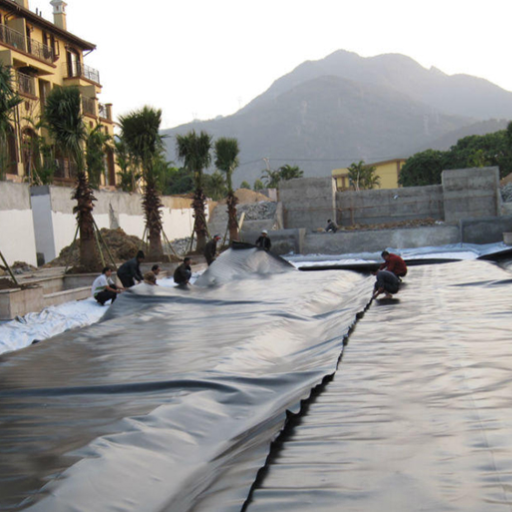
Permeability is a critical factor in distinguishing geotextiles from geomembranes because it determines their functionality in different applications. Geotextiles are designed to allow water and gases to pass through, making them ideal for filtration, drainage, and separation in construction projects. On the other hand, geomembranes are impermeable, creating a barrier that prevents the passage of liquids and gases. This property makes geomembranes suitable for applications such as containment systems, landfills, and waterproofing. Understanding the specific permeability requirements of a project ensures that the correct material is selected to optimize performance and prevent structural or environmental issues.
Understanding the Permeability Coefficient of Geotextile
The permeability coefficient of geotextile refers to its ability to allow the passage of fluids, typically water, through its fabric structure. This parameter is crucial in applications like drainage, filtration, and erosion control where controlled flow is essential for maintaining system efficacy and structural stability. Geotextiles are engineered with varying permeability coefficients based on factors such as material composition, pore size, thickness, and manufacturing process (e.g., woven or non-woven).
A higher permeability coefficient indicates that the geotextile can facilitate more water flow, making it ideal for drainage systems where rapid fluid movement is required. For example, non-woven geotextiles often exhibit higher permeability compared to woven ones due to their random fiber arrangement, which provides larger pore spaces. Conversely, woven geotextiles, with their tighter weave, generally have lower permeability but superior tensile strength, making them suitable for reinforcement applications where fluid restriction is vital.
To illustrate, studies have shown that typical permeability coefficients for non-woven geotextiles range from approximately 0.001 cm/s to 0.05 cm/s, depending on their GSM (grams per square meter) and pore size. Meanwhile, woven geotextiles may exhibit permeability coefficients as low as 0.0001 cm/s to 0.002 cm/s. These ranges emphasize the critical role of material selection in achieving both functional performance and long-term durability.
Understanding the permeability coefficient is particularly relevant in designing filters for erosion control, retaining structures, or landfill leachate systems, where improper selection could lead to clogging, insufficient drainage, or environmental contamination. Therefore, precise specification and compatibility with the surrounding environment are key to ensuring the effectiveness of geotextile applications in various engineering and construction contexts.
Impact of Water Permeability on Material Selection
Water permeability plays a crucial role in the selection of materials for engineering and construction applications, particularly in systems where controlling fluid movement is essential. Materials with high permeability, such as granular soils, allow fluids to pass through more freely and are ideal for drainage systems or filtration layers. On the other hand, low-permeability materials like clays or geomembranes are often used as barriers to prevent the migration of water, contaminants, or leachates.
For example, geomembranes, known for their impermeability, have a permeability coefficient typically as low as 1×10^-14 m/s. This makes them exceptionally suited for applications such as landfill liners or wastewater containment systems, where complete fluid retention is critical. Alternatively, geotextiles designed for filtration, with permeability values ranging from 1×10^-3 m/s to 1×10^-1 m/s, are engineered to allow water to pass through while blocking fine particles, thereby maintaining drainage efficiency.
The impact of permeability is further underscored in stormwater management systems. Highly permeable materials are integral to ensuring proper infiltration and reducing the risk of waterlogging or structural instability. Conversely, liners and barriers used in storage reservoirs or pond systems require low permeability to avoid seepage, ensuring water retention over time.
Professionals must account for factors like hydraulic conductivity, soil compatibility, and long-term durability to choose between permeable or impermeable materials. Additionally, environmental considerations, such as the presence of erosive forces or chemical pollutants, can also influence decisions, emphasizing the importance of balancing permeability levels with project-specific requirements for optimal performance.
When Should You Use a Geotextile and a Geomembrane Together?
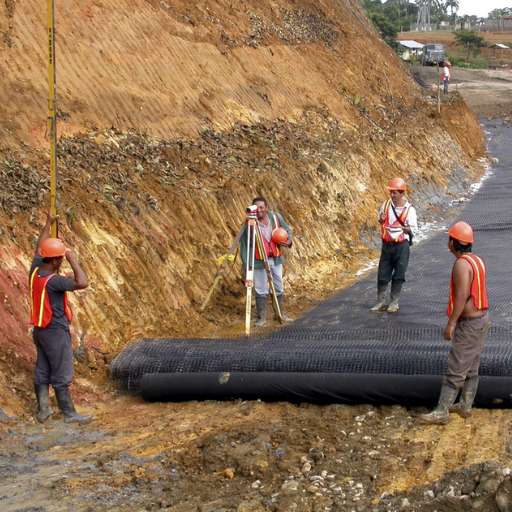
Geotextiles and geomembranes should be used together when a project requires both filtration or separation and an impermeable barrier. This combination is ideal in applications such as landfill lining systems, canal or reservoir construction, and wastewater containment. The geotextile protects the geomembrane from damage caused by sharp objects or uneven surfaces, while the geomembrane provides the critical impermeability needed to prevent fluid leakage. Together, they enhance durability, functionality, and overall project efficiency.
Benefits of Composite Geomembranes
- Enhanced Durability
Composite geomembranes provide exceptional strength and long-term resilience. The combination of geotextiles and geomembranes ensures resistance to punctures, tears, and abrasion. Studies show that composite systems can increase the lifespan of containment structures by up to 40%, significantly reducing maintenance and repair costs.
- Superior Impermeability
By integrating a geomembrane layer, these composites deliver optimal impermeability, preventing fluid leakage in critical applications like reservoirs, canals, and landfills. Laboratory testing demonstrates that composite systems reduce seepage rates by over 90% compared to standalone geotextiles.
- Effective Protection Against Mechanical Damage
The geotextile layer acts as a protective cushion for the geomembrane, safeguarding it from sharp objects and uneven subgrades. This adds an extra layer of security for installations in challenging environments, preserving the functionality of the entire system.
- Enhanced Chemical Resistance
Composite geomembranes resist a wide range of chemical exposures, making them ideal for containment of hazardous and industrial waste materials. Studies indicate their effectiveness against acids, alkalis, and various toxic compounds, ensuring safe containment over time.
- Versatility for Diverse Applications
These systems cater to a wide range of industries and applications, from agricultural water storage to mining projects. Their adaptability in structure and material properties makes them suited for a variety of climates and site conditions, ensuring broader usability.
- Cost Efficiency
By combining geotextiles and geomembranes into a single product, composite geomembranes reduce the need for additional layering materials, lowering overall installation costs. Furthermore, their durability translates to long-term savings by minimizing repair and replacement expenses.
- Ease of Installation
Composite geomembranes are lightweight and flexible, allowing for quicker installations and reduced labor demands. This streamlined process boosts productivity on-site and accelerates project timelines.
- Environmental Benefits
By effectively containing fluids and reducing contamination risks, composite geomembranes contribute to protecting groundwater and surrounding ecosystems. Their reliable performance aligns with modern environmental conservation standards, supporting sustainable development goals.
Applications in Civil Engineering Projects
Composite geomembranes play a pivotal role in a wide range of civil engineering applications. One of their most prominent uses is in landfill lining systems, where they effectively prevent leachate from contaminating groundwater. Studies have shown that modern composite geomembranes can achieve impermeability rates of less than 1×10⁻¹² m/s, making them a robust barrier against liquid infiltration.
Another key application is in water reservoirs and canals. By minimizing seepage losses, composite geomembranes enhance the efficiency of water management systems, particularly in areas prone to drought. For example, in arid regions, their use in irrigation canals has proven to reduce water loss by up to 90%, saving significant resources.
Infrastructure projects such as highways and railroads also benefit from geomembrane integration. When used as a base layer, they mitigate subsurface erosion and improve soil stability, which helps extend the lifespan of roads and tracks. Research indicates that incorporating geomembranes in road construction can decrease maintenance costs by up to 30% over a 20-year period.
Lastly, composite geomembranes are frequently utilized in mining operations for tailings storage facilities (TSFs). These installations help prevent hazardous substance leakage into the environment, complying with stringent regulations while reducing environmental liabilities. Their chemical resistance and durability make them a preferred choice for mining professionals worldwide, with installations showing continued integrity for over 20 years under demanding conditions.
These applications illustrate the dynamic capabilities of composite geomembranes and their growing importance in advancing the efficiency, sustainability, and safety of civil engineering projects.
Combining Geotextiles and Geomembranes for Optimal Performance
When combining geotextiles and geomembranes, I focus on leveraging the strengths of both materials to achieve optimal performance. Geotextiles provide excellent filtration, drainage, and separation, while geomembranes offer unmatched containment and impermeability. By integrating these materials, I can create systems that balance durability and functionality, ensuring effective solutions for complex engineering challenges such as erosion control, waste containment, and environmental protection.
Reference Sources
- Experimental analysis of geotextiles and geofibers composites – This paper examines geotextiles and geomembranes, highlighting their distinct properties and uses.
- Multi-scale assessment of geotextile-geomembrane interaction – This research focuses on the interaction between geotextiles and geomembranes, detailing their structural and functional differences.
- Geosynthetics: Specifications and Applications for Arizona – This document provides updated specifications for geosynthetics, including geotextiles and geomembranes, and their respective uses.
Top geotextile fabric Suppliers in China
Frequently Asked Questions (FAQs)
Q: What are the main disparities between geotextile and geomembrane?
A: The main disparities between geotextile and geomembrane lie in their permeability and functions. Geotextile is permeable and allows the movement of fine soil particles, whereas geomembrane is impermeable and is used primarily for anti-seepage purposes.
Q: How is a geomembrane utilized in civil engineering projects?
A: A geomembrane is utilized in civil engineering projects primarily for its anti-seepage properties. It acts as a barrier to prevent the passage of liquids, making it ideal for applications like landfill liners, ponds, and canals.
Q: What materials are used to create geomembranes?
A: Geomembranes are made from synthetic materials such as high-density polyethylene (HDPE), polyvinyl chloride (PVC), and other polymers. These materials provide the impermeable qualities necessary for various applications.
Q: Why is a geotextile considered a permeable material?
A: Geotextile is considered a permeable material because it is made of synthetic fibers that allow water and gases to pass through while retaining larger soil particles, thus functioning as a natural filter layer.
Q: What are the applications of geotextiles in environmental protection engineering?
A: In environmental protection engineering, geotextiles are often used for soil stabilization, erosion control, and as a natural filter layer in various projects such as road construction, retaining walls, and drainage systems.
Q: How does one membrane and two layers function in composite geomembrane?
A: A composite geomembrane combines one impermeable membrane with two layers of geotextile. This structure enhances the strength and durability of the geomembrane while improving its anti-seepage and filtration capabilities.
Q: What are some common geosynthetic material made types used in geotechnical applications?
A: Common geosynthetic materials used in geotechnical applications include geotextiles, geomembranes, and geocomposites. These materials are employed for tasks such as reinforcement, separation, filtration, and drainage.
Q: How does a pvc geomembrane differ from an hdpe geomembrane?
A: While both PVC and HDPE geomembranes are used for their impermeability, PVC geomembranes are more flexible and easier to install in complex sites, whereas HDPE geomembranes offer superior chemical resistance and durability.
Q: What role does the movement of fine soil particles play in geotextile applications?
A: The movement of fine soil particles is crucial in geotextile applications because geotextiles allow water to pass through while retaining these particles, preventing soil erosion and maintaining soil stability.
Q: Why are geomembranes considered essential in geotechnical materials and waterproof materials?
A: Geomembranes are considered essential in geotechnical and waterproof materials due to their impermeable nature, which provides effective barriers against fluid migration in a variety of applications, including landfill liners and water containment systems.

